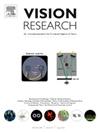当孩子明白要点时:快速场景分类的发展
IF 1.4
4区 心理学
Q4 NEUROSCIENCES
引用次数: 0
摘要
成人场景主旨识别的研究非常广泛;然而,人们对它的发展知之甚少。场景处理的行为研究倾向于广泛地支持一个长期的发展轨迹,在童年中期,定量和可能也定性地转向更像成年人的处理。在这里,我们试图通过针对主旨知觉来更好地理解儿童场景处理的早期阶段。5-10岁的儿童对持续时间很短的反蒙面场景进行分类。我们通过不同的呈现时间推断出每个年龄组提取类别诊断信息的处理速度,并通过不同的提示他们做出判断的水平推断出提取信息的质量(高级水平表示粗略的全局信息,基本水平表示更详细的信息)。所有年龄段的儿童都表现出了非常复杂的提取场景要点的能力,5 - 6岁的儿童在高级和基本水平判断上的表现都高于机会,时间只有32毫秒。分类能力也随着年龄的增长而提高。总的来说,我们的新发现表明,幼儿具有令人印象深刻的处理场景要点的能力,随后在童年中期长期发展到专业知识。本文章由计算机程序翻译,如有差异,请以英文原文为准。
When children get the gist: The development of rapid scene categorisation
Research surrounding adult recognition of scene gist is extensive; however, very little is known of its development. Behavioural studies of scene processing tend to broadly support a protracted developmental trajectory, with a quantitative and perhaps also qualitative shift towards more adultlike processing across middle childhood. Here we sought to better understand the very early stages of children’s scene processing by targeting gist perception. Children aged 5–10 years categorised backwards-masked scenes presented at very brief durations. We drew inferences about the processing speed with which each age group extracted category-diagnostic information by varying presentation durations, and the quality of information extracted by varying the level they were prompted to make their judgments (superordinate-level indicative of coarse global information, basic-level indicative of more detailed information). Children across all ages demonstrated a remarkably sophisticated ability to extract scene gist, with 5–6-year-old children performing above chance for scenes presented for as little as 32 ms for both superordinate and basic-level judgements. Categorisation performance also became more efficient with age. Overall, our novel findings indicate that young children possess an impressive ability to process a scene’s gist, which is followed by a protracted development towards expertise across middle childhood.
求助全文
通过发布文献求助,成功后即可免费获取论文全文。
去求助
来源期刊

Vision Research
医学-神经科学
CiteScore
3.70
自引率
16.70%
发文量
111
审稿时长
66 days
期刊介绍:
Vision Research is a journal devoted to the functional aspects of human, vertebrate and invertebrate vision and publishes experimental and observational studies, reviews, and theoretical and computational analyses. Vision Research also publishes clinical studies relevant to normal visual function and basic research relevant to visual dysfunction or its clinical investigation. Functional aspects of vision is interpreted broadly, ranging from molecular and cellular function to perception and behavior. Detailed descriptions are encouraged but enough introductory background should be included for non-specialists. Theoretical and computational papers should give a sense of order to the facts or point to new verifiable observations. Papers dealing with questions in the history of vision science should stress the development of ideas in the field.
 求助内容:
求助内容: 应助结果提醒方式:
应助结果提醒方式:


